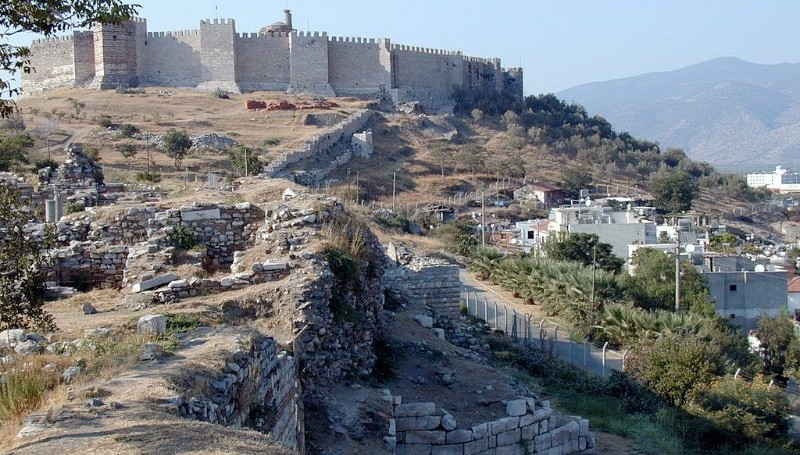Холм Аясулук в Эфесе
Even in the 11th century, it is possible to see traces of a new settlement in the Artemis region of Ephesus and the foothills of Ayasuluk Hill. However, monumental works belong to Aydinogullari and the early Ottoman period (14th and 15th centuries). Places of worship, masjids, baths and tombs were built in this period. The finds shows the commercial relations with Spain, China, Iran and Syria.
In the late 14th century, a metropolis is formed on the Ayasuluk Hill. It became the administrative, commercial and religious center of the Aydiogullari Principality.
There are still some artifacts showing the splendor of the city at that time. These are Isa Bey Mosque, which was rebuilt back in the 20th century, and its Hamam many small mosques, other baths and shrines. But even these fail to explain the appearance and meaning of the city at that time.
After the conquest of Ephesus by Seljukian, the swampy area formed 100 years ago was reunited with the Anatolian Hinterland. This gave the city a better supply.
The distance of the new Turkish port to the city was 6 km when the old port was completely in the swamp area. So the goods that came to the port had to go through the streets or rivers. However, under the Turkish sovereignty, the Genoese, Venetians, Jews, Byzantines and Armenians settled in the region.
In the excavations, where the Roman Odeon, was used for the purpose of resettlement in the time of the Turks, and the Isabey Mosque, ceramic pieces found they show that the city was trading with Iran, Syria, Spain and China at that time. The remarkable thing is the high standard of living and luxury. The goods from Europe and foreign countries were also brought by pilgrims.
However, anthropological analyzes on skeletons also reveal other realities. Infectious diseases and low levels of nutrition indicate that people have gone through also difficult times. Many child deaths and deaths from war-related injuries were also determined in analyzes. The evidence of weapons and ammunition are proof that the city was always under attack.
Archaeological understanding of the transformation between the ancient age and the New Age is an important challenge. On the other hand, the settlement areas and church documents provide information. However, specific studies will be carried out in the light of changes on climate change, commercial systems, cultural and traditional changes.
Today on and around Ayasuluk Hill there are Temple of Artemis, Isa Bey Mosque, St. John's Basilica, Selcuk Castle, Tombs, Odeon and Baths. In our Ephesus Tour itineraries, there are detailed tour programs in the Ayasuluk region.

